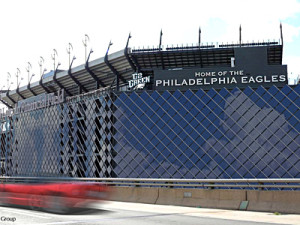By Kirsten Bokenkamp
The chance that Congress will pass a US climate change bill before the global summit in Copenhagen is looking increasingly slim, but that does not stop us from individually minimizing our own impact on the earth. Green-up Your Life! is all about reminding us that as individuals, we can, and should, do our part to protect our planet and combat climate change – even when our policy makers are not quite there. Reducing, Reusing, and Recycling are a big part of the things we all can do. Today’s blog is going to focus on the first two (and most important) parts of this well-known mantra: Reduce and Reuse.
In our society, where we covet big houses and new cars, where we are impressed with shiny toys and with the newest fashions, not everybody likes to hear this, but simply reducing what we buy is one of the best things we can do for the planet. In his New York Times blog Dot Earth, Andrew Revkin asks if being a “green consumer” is good enough: after all, even when corporations are selling environmentally sustainable products, they are still selling consumerism, and their primary goal is not to save the planet, but instead to get you to buy more new things.
And, generally, the more we buy – the more we waste. Think about all of the packaging and the transport associated with everything we buy! According to the EPA, between 1960 and 2007 the amount of waste each person creates has almost doubled from 2.7 to 4.6 pounds per day. Reversing this trend is crucial to the future of the earth.
If you have never seen Annie Leonard’s Story of Stuff, I highly recommend that you spend 20 minutes watching it to learn more about the processes of production and consumption within our society. By the end of the short, fun, and interactive film, you most likely will have a different view on buying things. Do you love to give gifts? Rethink how you give, and how it impacts the earth. Good alternative ideas include a gift certificate to a massage or yoga classes; tickets to a concert or football game; a batch of fresh baked cookies; a dinner out at an environmentally sustainable restaurant; renting a kayak for a day out on the water; or simply spending some time together, cooking or playing games. A study about happiness during the Christmas season, published in the peer-reviewed Journal of Happiness Studies, has shown that:
Lower well-being occurred when spending money and receiving gifts predominated. Engaging in environmentally conscious consumption practices also predicted a happier holiday, as did being older and male. In sum, the materialistic aspects of modern Christmas celebrations may undermine well-being, while family and spiritual activities may help people to feel more satisfied.

Tommy Sheep
If all this talk about reducing sounds good to you, use the day after Thanksgiving, historically the largest shopping day in the US, to make a point. In 65 countries around the world, millions of people participate in Buy Nothing Day to demonstrate that we don’t have to buy all the newest fashions and the brightest toys just because they are endlessly marketed to us. It is actually pretty empowering to decide to ignore all the marketing schemes. Check out these spoof ads by Adbusters, and imagine how much less we would collectively buy if all ads were as honest as these. (There are more funny ones on their website).

True Colors of Bennetton
Buying less does not mean not buying anything at all. Just try to keep your impact low, and reuse items when you can. Have you checked out your neighborhood thrift store or consignment shop? Most have clothes, toys, household items, shoes, and books. Check it out – you may be surprised. There are about 6,000 reuse centers around the US, ranging from specialty stores to Goodwill. Another alternative is to buy lightly used items on Craiglist or ebay. You can’t really go wrong when you are saving money and helping to preserve the earth’s resources.
Even if we cut down on what we buy, of course we will all still buy many things. Reducing and reusing isn’t just about less consumerism and buying used items. It is also about bringing reusable bags to a store, drinking from a reusable coffee cup or water bottle, not using the mini-bottles of shampoo at hotels; reducing the amount of packaging you use by buying food in bulk, and reducing paper by printing on both sides, paying bills online and getting yourself off of unwanted mailing lists. Do you wonder what kind of impact this could have?
• If every Starbucks customer used a reusable coffee thermos, we could save 1,181,600 tons of wood, 2,040,061,237 pounds of carbon dioxide, and 4,441,093,624 gallons of water every year.
• The production of plastic water bottles in the US generates more than 2.5 million tons of carbon dioxide, and uses 17 million barrels of oil per year! And that is not even taking into account what happens to all those bottles once they reach the landfill. (In the U.S. more than 30 billion plastic water bottles are discarded each year. Only 15% are recycled; the rest end up in landfills, or as litter – 66 million every day.)
• According to the World Watch Institute, each year Americans throw away some 100 billion polyethylene plastic bags. (Only 0.6 percent of plastic bags are recycled.) If every shopper took just one less bag each month, this could eliminate the waste of hundreds of millions of bags each year.
• Producing one ton of paper requires 2-3 times its weight in trees. If the entire U.S. catalog industry switched its publications to just 10-percent recycled content paper, the savings in wood alone would be enough to stretch a 1.8-meter-high fence across the United States seven times.
These facts clearly show that we can all make a difference by changing our habits – even just a bit. It is unrealistic to think that we will all stop buying things, but if we reduce what we do buy, buy used items when we can, and try to reduce the negative side effects of consumerism by choosing products with less packaging and bringing our own shopping bags, it is a step in the right direction. We need to start thinking before we make purchases and stop buying things we don’t need, which is a tough thing to do in a society where people living in cities are exposed up to 5000 advertisements a day. It is time to show those companies that in order to protect our planet, we will not give in so easy!
###
By promoting cleaner energy, cleaner government, cleaner cars, and cleaner air for all Texans, we hope to provide for a healthy place to live and prosper. We are Public Citizen Texas.
Read Full Post »

 If you live in the Houston area, you may be in the danger zone of a toxic chemical facility, and oil and chemical industry executives are trying to keep it that way. These toxic chemical facilities are vulnerable to accidents or terrorist attacks, even though safer alternatives are available. Now Congress is considering industry-backed legislation (HR 908) that would deny the Department of Homeland Security authority they have requested to require high risk facilities to prevent chemical disasters by using safer, available alternatives.
If you live in the Houston area, you may be in the danger zone of a toxic chemical facility, and oil and chemical industry executives are trying to keep it that way. These toxic chemical facilities are vulnerable to accidents or terrorist attacks, even though safer alternatives are available. Now Congress is considering industry-backed legislation (HR 908) that would deny the Department of Homeland Security authority they have requested to require high risk facilities to prevent chemical disasters by using safer, available alternatives.








 Good mooooooorning Texas! Just woke up, haven’t even gotten out of my pajamas or had my coffee (okay, I’m running a little late), but I couldn’t wait a moment longer to spread the good news. We’ve hit the big Times.
Good mooooooorning Texas! Just woke up, haven’t even gotten out of my pajamas or had my coffee (okay, I’m running a little late), but I couldn’t wait a moment longer to spread the good news. We’ve hit the big Times.



